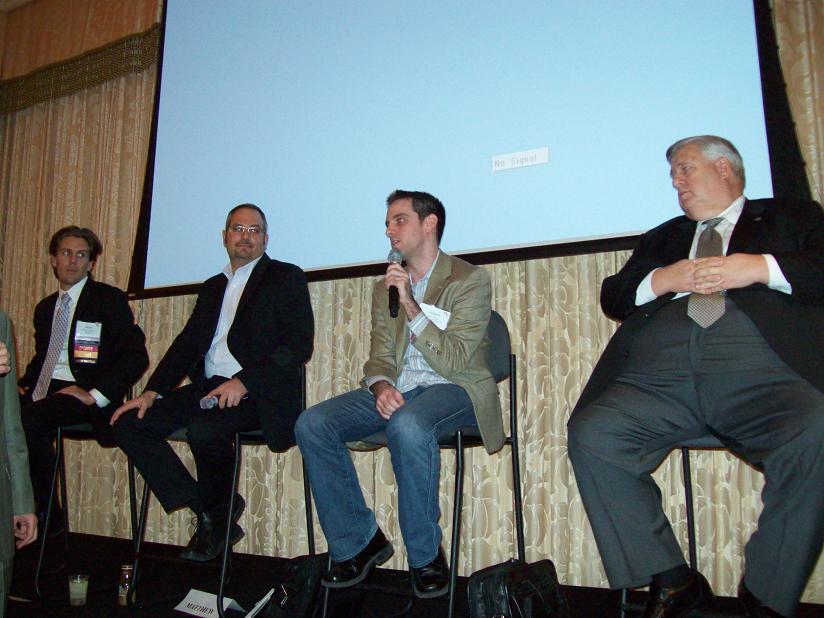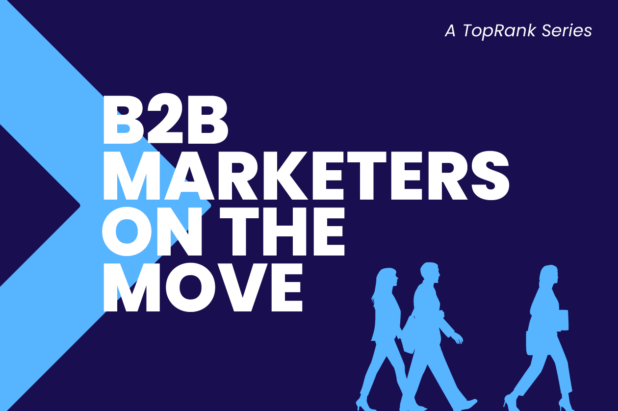Last week, I was in Las Vegas for the LeadingRE annual conference and marketing technology event speaking on social media and SEO strategies for real estate professionals. It’s always interesting to see where different verticals are at with their willingness to embrace social  channels, and I’m pleased to report the top realtors globally are already engaging, or at the least starting to define their path.
channels, and I’m pleased to report the top realtors globally are already engaging, or at the least starting to define their path.
I gave the opening presentation to the MarTech part of the conference – a track of panels/sessions designed to help real estate professionals better integrate their marketing initiates with technology. Additionally, I spoke on two panels in the general sessions of the conference: one on online reputation management and one as an open panel Q&A answering marketing strategy questions.
For Online Marketing Blog readers, following is a wrapup of each of my sessions and some key takeaways.
Architecting A Web 2.0 Marketing And PR Strategy
For this session, I took event goers through an overview of the process we at TopRank implement for companies seeking social media strategy: a social media roadmap. I took audience members through the essential elements of the roadmap:
1. Define an audience
Who is it you are trying to influence? Where are they participating, what types of content resonates with them? Understanding your audience comes first, and will drive the next pieces of the roadmap.
2. Identify objectives
What outcomes do you want from this audience? Only after you understand your digital audience should objectives be solidified, as research may uncover new opportunities not conceived initially. While many skip to objectives, audience research provides the current situation necessary to proceed to identify objectives.
3. Develop strategic approach
For a social media marketing strategy to be effective and not a cookie-cutter application, you must have a strategic approach unique and logical for your brand. Audience data + objectives + insight into your industry + strategic mindset as a marketer will enable you to formulate a strategic approach that delivers results and permeates the market.
4. Implement tools/tactics
Even more popular than skipping to step 2, most marketing and PR pros skip immediately to step 4. It’s a cliché to say “we need a Twitter account” or “we need a Facebook page.” You don’t know that yet. Nor do you have the proper roadmap elements to execute them successfully by skipping immediately to tactical elements. It’s like entering a battle by sending in the latest wave of ultra-sophisticated fighter jets but not having any sort of plan of how they work into your larger strategy. Yeah, they might be bigger/faster/stronger but it’s setting yourself up for failure without knowing how they integrate with other elements.
5. Measure results/metrics
What will your success metrics be? Formulate not just an ultimate objective measurement, but define the right KPIs that actually roll to those objectives. Understand how they all work together and stagger them in the right order in your marketing dashboard to keep your finger on the pulse of success. It takes a comprehensive understanding of web analytics reporting before getting into this phase.
Online Reputation Management Panel
For this panel, I presented alongside Jennifer Baumann, Esq. of DLA Piper. As I am not a lawyer and cannot provide any legal counsel, it was a good idea for Eric Bryn, conference organizer for LeadingRE to pair us. I shared prevention and response strategies and Jennifer discussed legal issues.
In terms of online reputation management, the old adage of “an ounce of prevention is worth a pound of cure” could not be truer. I spoke mostly on prevention, but also response. Some key takeaways from this panel:
Negative PR gets referenced – The web is referential, and we are actively tagging brands to their actions. For example, the first thing many mom bloggers now think of when they hear the name Motrin is the Motrin Moms fiasco. We are constantly archiving and building upon events, news and essentially our lives digitally. This paints a larger picture of people and companies, and the scars of negative PR are not going to go away. By having a presence yourself and already established as a brand digitally, you get to be a part of that debate as opposed to silently sitting on the sidelines and allowing others to dictate how you are seen.
Additionally, if you foster a community of supporters, that negative PR might get hedged in the first place. If I wrote a blog post titled, “Apple Sucks,” almost immediately I’m going to get comments defending Apple – not just in my own comment section but on other blogs that debate and interact with me. Instead of a one-sided story, it will turn into a lively discussion and debate, with all sides being considered. A community of brand advocates is a powerful force for defending a brand or personal reputation. In the case of Apple, whether by design or simply due to fanatical fans, they are now a part of the brand’s organic response.
Search engine brand awareness – If your brand has a large digital footprint with multiple domains/sub-domains, an authoritative presence across social channels and a fan-base, owning page 1 of Google for your brand name is possible. By doing this, you won’t let a negative (and let’s hope isolated) event or experience show up in branded searches.
Of course, in cases where negative PR spirals out of control (aka a Groundswell) a negative situation can acquire so many links/attention it ranks on page one for your brand. In those cases, buying search ads to help counter the negativity, posting responses on the offending site, adding a response on your own site, and strategizing ways to regain control of page one via organic SEO methods are just some potential steps you can take. But of course, it all depends on the specific situation what the response strategy should be.
Speaking of response strategy – for problems you anticipate may arise, having one is critical to be prepared for the worst.
Consult PR before engaging legal – The RIAA’s reputation is irreparably damaged by their continual treatment of their biggest fans as criminals. Whether they legally can do something is not necessarily a reason they should. When technology comes along that makes a previous model obsolete, the natural reaction of the incumbent is to rally against it to defend a previous world. Unfortunately, all this succeeds in is positioning the organization or industry as draconian and opens the door to innovators who are designing models that embrace the new.
When someone says something truthful but biting against your brand, the natural reaction might be to call your laywers to suppress that information. All this does is provide ammunition for that individual or media entity to succeed in gaining greater attention.
In 2003, Barbra Streisand tried to sue photographer Kenneth Adelman for $50 million for taking a photograph of her house as he documented the California coastline as part of a project. As a result of the case, the picture substantially increased in popularity – quickly attracting 420,000+ views of a photo that otherwise would have existed in relative obscurity. Mike Masnick reported on the situation and coined the phrase “The Streisand Effect.” The name stuck, and now even has its own dedicated Wikipedia page documenting multiple examples of companies suffering from the Streisand Effect by calling legal before consulting PR.
Of course, there are situations where legal should be consulted, but they should be considered carefully, with legal being used as a last resort.
Strategy Salon Panel
This was an open Q&A discussion from the audience, where, Steve Harney, Matthew Ferrara, Matt Dollinger and I all riffed on answers to audience questions (moderated by Eric Bryn). A few of the riffs from our discussion included:
Getting your company to buy in to social media – This needs to happen from the top. If your leaders aren’t fully bought in and driving forward the items you want team members participating in, you can’t expect them to succeed. As one example, if you have a company blog, someone up top should be leading and driving it if you want the rest of the team to contribute as well. To inspire people to stay motivated and engaged, create feedback loops within the organization to highlight success and nurture participation.
The perfect company website – There is no single archetype of the perfect website. Also, yours shouldn’t necessarily model competitors or one you think is pretty, rather it should resonate with prospects. Keep SEO in mind from the start and work with developers cognizant of search engines or consult an SEO firm to guide your development process. Site search matters, and is one of the most important features of any website according to Google. Leverage site search to gain data/insight into your customers and also tweak results to highlight fresh content or current specials.
The real estate company of the future – Instead of doing everything in-house, you may begin to outsource certain elements like design, marketing or IT. Why have generalists when you can have specialists in each field and work with them across distances and time zones via agile project management systems? Also, for smaller companies, it will be about more than just those within a small radius; recruiting top talent will be vital for performance. Of your full-time team members, leadership will be an integral role and not something simply relegated to management. You need to find and empower leaders at all levels within the organization if you want to succeed against competitors.



